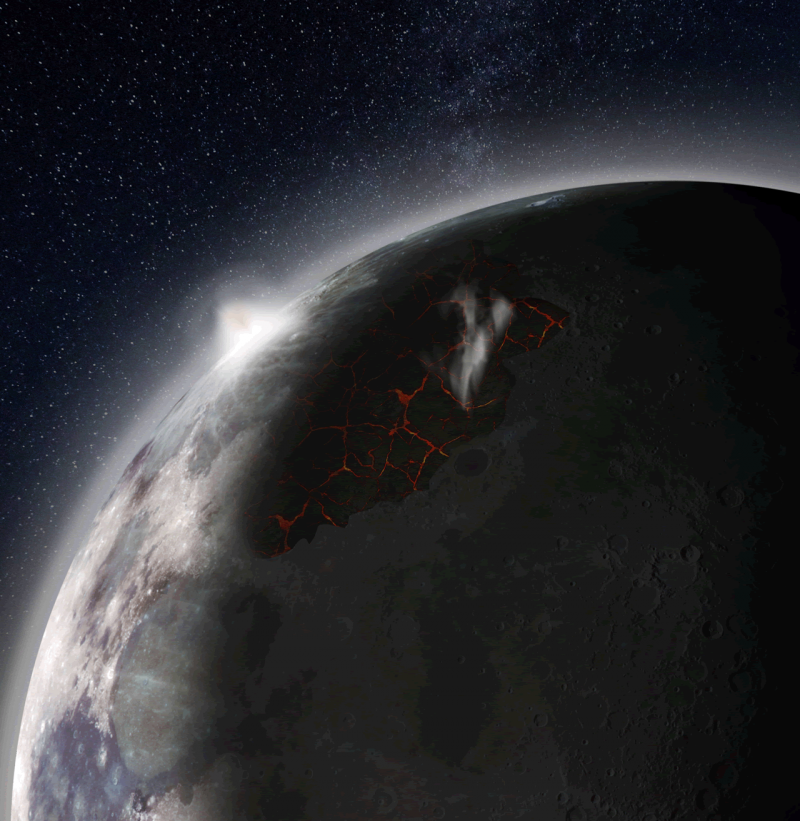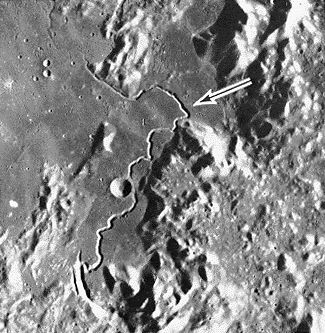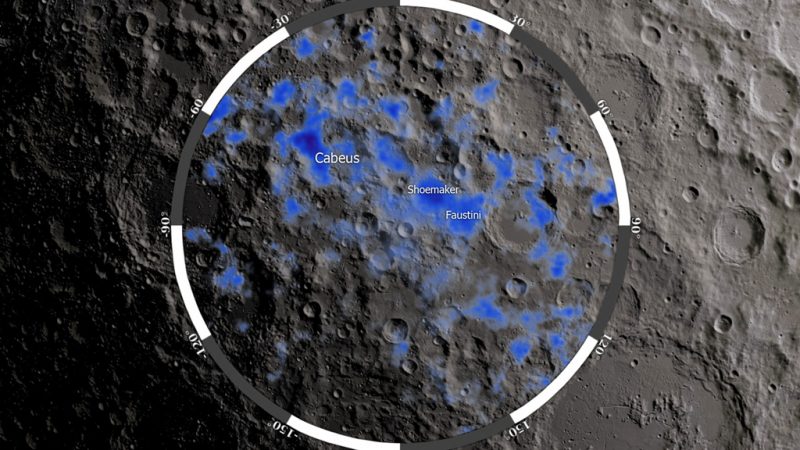
Earth has likely had its atmosphere for billions of years, while our companion moon is airless. But maybe the moon once had an atmosphere, too, albeit a temporary one. A new study suggests an ancient atmosphere – 3 to 4 billion years ago – came from the same source proposed for Earth’s early atmosphere, that is, outgassing by volcanos. Two scientists have now calculated that there was a time when intense lunar volcanic eruptions spewed gases above the moon’s surface faster than they could escape to space. The study is published in the peer-reviewed journal Earth and Planetary Science Letters.
We know volcanos once erupted on the moon. The dark blotches making up the familiar face of the Man in the Moon (or rabbit, or lady, or however you see it) are impact basins – craters leftover from early impacts by flying debris – which later filled with lava. Whole seas of volcanic basalt, today known as the lunar maria, can be seen on the moon. This lava emerged from the moon’s interior while it was still hot from its formation.
In the moon’s low gravity, the lava sometimes flowed for hundreds of kilometers, creating the lunar rilles observed on the moon today. Because there’s no wind or weather on the moon today (because there’s no atmosphere), we can still see these ancient lava flows.
What’s more, analyses of moon rock samples, carried back to Earth decades ago by Apollo astronauts, indicate those magmas carried gas components, such as carbon monoxide, the ingredients for water, sulfur, and other volatile species.

Debra Needham is a research scientist at NASA’s Marshall Space Flight Center, and she’s lead author of the new study. She collaborated with David Kring of the Lunar and Planetary Institute. The two astronomers calculated the amounts of gases that rose from the erupting lavas as they flowed over the moon’s surface. Their study showed that the gases accumulated around the moon to form a transient atmosphere. Their statement said:
The atmosphere was thickest during the peak in volcanic activity about 3.5 billion years ago and, when created, would have persisted for about 70 million years before being lost to space.
They said the two largest pulses of gases were produced when lava seas filled the Serenitatis and Imbrium basins about 3.8 and 3.5 billion years ago, respectively. Astronauts of the Apollo 15 and 17 missions explored the margins of those lava seas and collected samples that not only provided the ages of the eruptions, but also contained evidence of the gases produced from the erupting lunar lavas, these scientists said.
Needham and Kring also said their work has implications for future explorations of the moon. Their statement said:
The analysis … quantifies a source of volatiles that may have been trapped from the atmosphere into cold, permanently shadowed regions near the lunar poles and, thus, may provide a source of ice suitable for a sustained lunar exploration program. Volatiles trapped in icy deposits could provide air and fuel for astronauts conducting lunar surface operations and, potentially, for missions beyond the moon.

Bottom line: Scientists calculated how much gas rose from lava from ancient lunar volcanos and showed that those gases accumulated around the moon to form a temporary atmosphere, 3 to 4 billion years ago.











